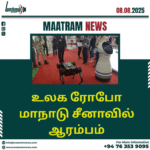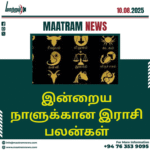உலக பழங்குடியினர் சர்வதேச தினம் இன்று 09 ஆகஸ்ட் அங்கிகரிக்கப்பட்டுள்ளது.
யார் அந்த பழங்குடியினர்? ஏன் இவர்களுக்கு என்று தனித்துவம் ஒவ்வொரு நாட்டிலும் வழங்கப்படுகின்றது? இவ்வாறு பல கேள்விகள் தோன்றுகின்றது.
இவற்றை விட இன்னும் ஒரு சுவாரஸ்யம் என்னவென்றால் அவர்களுடைய கலாச்சாரம். அப்படி என்ன இருக்கிறது என்று பார்த்தால் ஆம் இவர்களின் வாழ்க்கை முறை எம்மை போன்றதல்ல எம்மிலிருந்து பல மடங்கு வேறுபடுகின்றது.
இங்கே இந்த குறிப்பில் எம் நாட்டில் ஏன் எமது மட்டக்களப்பு பிரதேசத்திலேயே பழங்குடியினர் வாழகின்றனர் என்பதை தெரிவிக்க விரும்புகிறேன்.
எமது மக்கள் அயல் வீட்டுகாரர்களுக்கு கூட பிறந்தநாள் வாழ்த்தை நேரில் தெரிவிக்க நேரம் இல்லாமல் முகப்புத்தகத்தில் பதிவுகளை இடுகின்றனர். இவை எல்லாம் எமக்கும் உண்மையான உலகுக்கும் இடையில் தூரத்தை அதிகரிக்கச்செய்கின்றதும் உயிர் அற்ற வலைத்தளங்களுடனான நெருக்கத்தை அதிகமாக்கி கொள்ளும் செயற்பாடும். இவற்றை இத்தோடு நிறுத்தி விட்டு இந்த கட்டுரையின் கருப்பொருளுக்குள் செல்வோம்.
எமது நாட்டின் ஆதி குடிகளாக கருதப்படும் இயக்கர் மற்றும் நாகர் பரம்பரையில் இருந்து வந்த பரம்பரையினரே தற்போது எம்மால் ஆதி குடியினர் அல்லது பழங்குடியினர் என்று அழைக்கப்படும் இந்த சமூகத்தினர்.
இலங்கையின் பழம்பெரும் தொகுப்பு நூலான மகாவம்சத்தை மேற்கோள் காட்டி பௌத்தப் பிக்குகளும், இலங்கையின் பௌத்த மகாவம்சக் கொள்கைகளை அப்படியே ஏற்றுக்கொள்பவர்களும், இலங்கையின் முதல் மன்னனாக மகாவம்சம் கூறும் விஜயன் இலங்கை வந்தடைந்தப் போது அவனை வரவேற்று பின்னர் விஜயனுடன் இணைந்து வாழ்ந்த குவேனி எனும் இயக்கர் குலப்பெண்ணுக்கும் இரண்டு குழந்தைகள் பிறந்தது பற்றியும் சொல்லப்படுகிறது.
விஜயன் அரசமைத்து தனது பட்டத்து இளவரசியாக தென்னிந்தியாவில் பாண்டிய குலத்து பெண்ணை திருமணம் முடித்து பட்டத்து அரசியாக்கினான் என்றும், அதன் பின்னர் குவேனி இயக்கர் இனத்தவர்களாலேயே கொல்லப்பட்டாள் என்றும், விஜயனுக்கும் குவேனிக்கும் பிறந்த ஒரு ஆண் குழந்தையும் பெண் குழந்தையும் தப்பியோடி காடுகளில் வாழத்தலைப்பட்டனர் என்றும், அவர்களின் வாரிசுகளே இன்றைய இலங்கை காடுகளில் வசிக்கும் வேடர்கள் என்றும் கூறிவருகின்றனர்.
இதனடிப்படையில் அரச ஆட்சி காலத்திற்கு முந்தய காலத்திலிருந்து (அதாவது கற்காலம்) வாழ்ந்து வரும் இவர்கள் கிழக்கு கரையோரத்திற்கு வந்தது எப்படி? இவர்கள் ஆரம்ப காலத்தில் தம்பானை பகுதியில் வாழ்ந்து பின்னர் மகாவலி கங்கையின் பள்ளத்தாக்குகளில் குடி பெயர்ந்து பிரித்தானியரின் காலத்தில் கரையோரத்தில் குடி அமர்த்தப்பட்டதாக ஒரு வரலாறும் உண்டு.
இவர்கள் தங்களை “வன்னியலா எத்தோ” (Wanniyala-Aetto) என்றே சொல்கிறார்கள். இதன் பொருள் “காட்டைச் சேர்ந்தவர்கள்” அல்லது “காட்டில் வாழ்பவர்கள்” அல்லது “காட்டிலுள்ள மக்கள்” என்பதாகும்.
மட்டக்களப்பில் உள்ள பழங்குடியினத்தவர்களின் தலைவராக நல்ல தம்பி வேலாயுதம் மற்றும் திருகோணமலை மாவட்ட பழங்குடியின தலைவர் நடராசா கணகரட்ணம் உள்ளனர்.
கிழக்கு மாகாணத்தில் திருகோணமலை மாவட்டத்தின் மூதூர் பிரதேசத்தில் இருந்து மட்டக்களப்பு மாவட்டத்தின் திராய்மடு வரையிலான பிரதேசம் வரை இவர்களது குடியிருப்புகள் தற்போது அறியபடுகின்றது. அந்த வகையில் மூதூர், வெருகல், வாகரை, இலங்கைத்துறை, மாங்கேணி, வாகனேரி, குஞ்சாங்கல்குளம், கதிரவெளி, காயங்கேணி, மதுரங்குளம், பனிச்சங்கேணி, கட்டுமுறிவு, நாசிவன் தீவு, இறால் ஓடை, பொண்டுகள்சேனை, களுவங்கேணி, பால்சேனை, திராய்மடு, கொக்கட்டிசோலை ஆகிய பிரதேசங்களில் தற்போது குறுகிய ஒரு வட்டத்தினுள் வாழ்ந்து வருகின்றனர்.
வில்ஹெய்ம் கெய்கர் என்பவரின் ஆய்வு:
இவர்கள் இலங்கைக்கு ஆரியரின் வருகைக்கு முன்னரேஇ இலங்கையின் வரலாற்றுக் காலம் முதல் வசிப்பவர்கள் என்றும், இவர்கள் தென்னிந்திய பழங்குடி மரபினருடன் ஒத்த தன்மைக்கொண்டவர்கள் என்றும் வில்ஹெய்ம் கெய்கர் தெரிவித்துள்ளார்.
இலங்கை கிழக்குக் கரையோரப் பகுதியில் வசிக்கும் இவ்வின மக்களின் சில குழுக்கள் தமிழ் போன்ற ஒரு மொழி பேசுகின்றார்கள்.
இவர்கள் பேசும் மொழி ஆரிய மொழிகள் அல்ல என்று கருத்து தெரிவிக்கும் வில்ஹெய்ம் கெய்கர், அதேவேளை ஆரிய மொழிகளின் சாயல் இவர்களது பேச்சில் இருக்கின்றன எனவும், அவை அண்மைக்காலங்களில் இவர்களது பேச்சில் கலந்தவைகள் என்றும் தெரிவித்துள்ளார்.
அந்நிய காலணித்துவம் தொடக்கம் உள்நாட்டு யுத்தம், இன ஆக்கிரமிப்பு, புவியில் ரீதியிலான மாற்றம், சுனாமி, காடழிப்பு, நில ஆக்கிரமிப்பு மற்றும் காலநிலை மாற்றம் என பல்வேறு சிக்கல்களை எதிர்கொண்ட இம்மக்கள் தற்போது நாட்டின் பொருளாதார சிக்கலின் காரணமாக, வாழ்வாதாரங்கள் கேள்விக்குறியாகி நிற்கும் நிலைமைக்கு ஆளாகியுள்ளனர்.
-சீதா (சௌமினி Journalist)-
மட்டக்களப்பு பழங்குடியினர் தலைவர் நல்லதம்பி வேலாயுதம் 👇👇👇👇
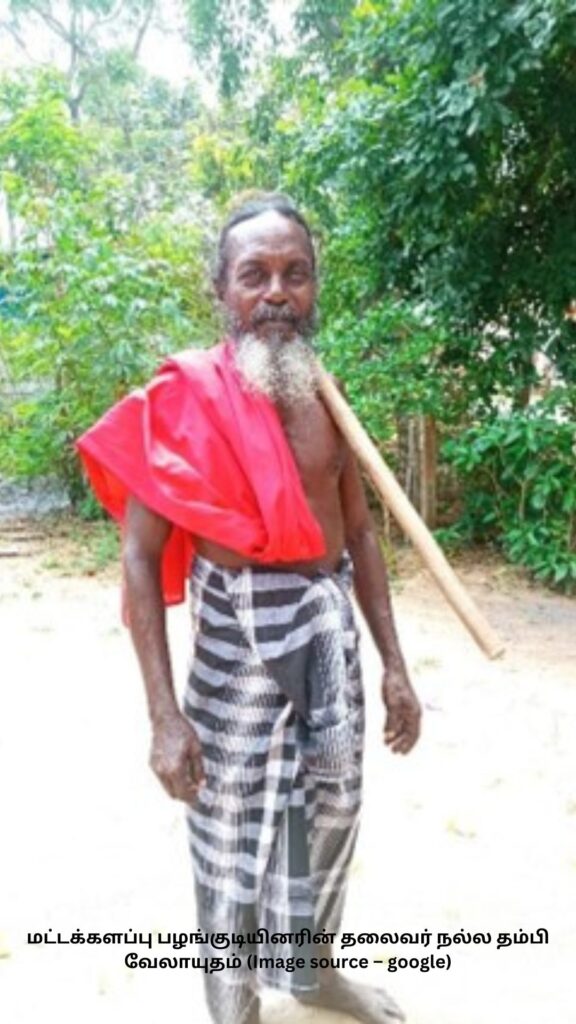
திருகோணமலை பழங்குடியினர் தலைவர் நடராசா கணகரட்ணம் 👇👇👇👇
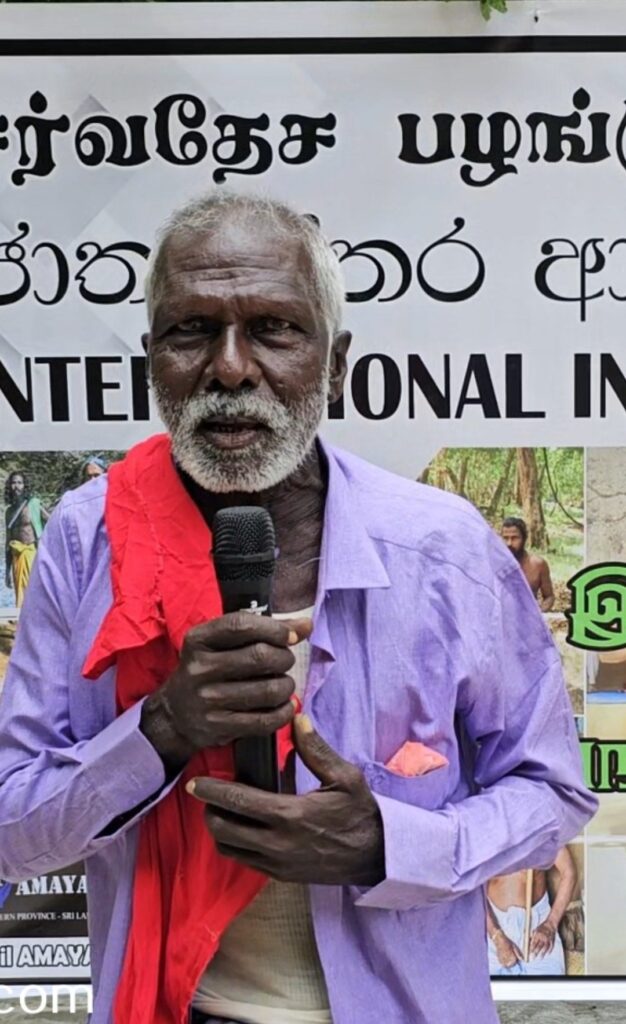
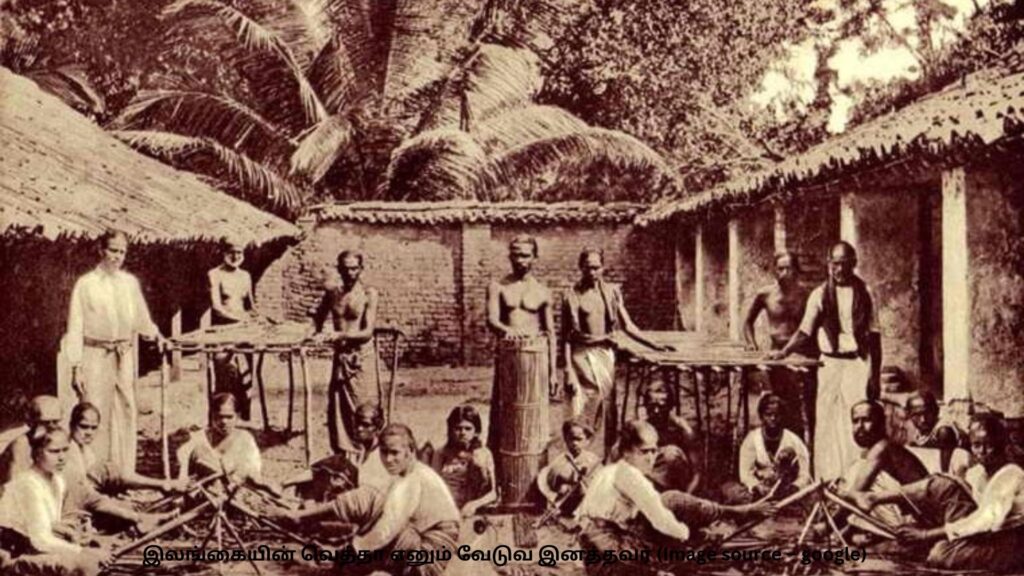
மேலதிக தகவல்களுக்கு மாற்றம் செய்திகள் இணையத்தளத்தினுள் பிரவேசியுங்கள்.
மேலதிக தகவல்களை உடனுக்குடன் பெற்றுக்கொள்ள மாற்றம் செய்திகள் முகநூல் பக்கத்தை பின்தொடரவும்.
Today is the International Day of the World’s Indigenous Peoples
Today is recognized as Tribal Day.
Who are those tribes? Why are they given uniqueness in every country? Many questions arise like this.
Another interesting thing is their culture. If we look at what is there, yes, their way of life is not like ours, it is many times different from ours.
Here in this note, I would like to explain why tribals live in our country, in our Batticaloa region.
Our people, without having time to wish their neighbors a happy birthday in person, post on their homepages. All this increases the distance between us and the real world and increases the closeness with lifeless websites. Let us leave these and move on to the theme of this article.
The descendants of the Dikkar and Nagar lineages, who are considered the original inhabitants of our country, are the people who are now called Adi Kutiyarin or Tribals.
Citing the ancient Sri Lankan annals, the Mahavamsa, Buddhist monks and those who accept the Buddhist Mahavamsa principles of Sri Lanka as they are, it is said that when Vijayan, the first king of Sri Lanka, arrived in Sri Lanka, he was welcomed by a woman from the Iyaka clan named Kuveni, who lived with Vijayan.
After Vijayan became king, he married a Pandya clan woman from South India as his crown princess and made her the crown queen. Kuveni was later killed by the Iyaka clan, and a boy and a girl born to Vijayan and Kuveni ran away and lived in the forests, and their descendants are the hunters who live in the forests of Sri Lanka today.
Based on this, how did these people, who had been living since the pre-royal era (i.e., the Stone Age), come to the east coast? There is a story that they initially lived in the Thampana area and later migrated to the valleys of the Mahaweli Ganga and settled along the coast during the British era.
They call themselves “Wanniyala-Aetto”. This means “those from the forest” or “those who live in the forest” or “people of the forest”.
The tribal leaders in Batticaloa are Nalla Thambi Velayudham and the tribal leader of Trincomalee district, Nadaraasa Ganakaratnam.
Their settlements are currently known to extend from the Muthur area of Trincomalee district to the Thiraimadu area of Batticaloa district in the Eastern Province. In this way, they currently live within a narrow circle in the areas of Mudur, Verugal, Vagarai, Sri Lankathurai, Mankeni, Vaganeri, Kunjangalkulam, Kathiraveli, Kayankerani, Madurankulam, Panichankerani, Katumurivu, Nasivan Island, Iral Odai, Pontukalsenai, Kaluvankerani, Palsenai, Thiraimadu, and Kokkattisolai.
Research by Wilhelm Geiger:
Wilhelm Geiger has stated that these people have been living in Sri Lanka since the historical period before the arrival of the Aryans to Sri Lanka, and that they are similar to the tribal people of South India.
Some groups of these people living in the eastern coastal region of Sri Lanka speak a language similar to Tamil.
Wilhelm Geiger, who comments that the language they speak is not an Aryan language, says that there are traces of Aryan languages in their speech, and that they have been mixed into their speech in recent times.
Having faced various problems from foreign colonialism to civil war, ethnic invasion, global change, tsunami, deforestation, land encroachment and climate change, these people are currently facing a situation where their livelihoods are in question due to the country’s economic crisis.


